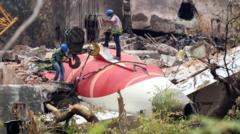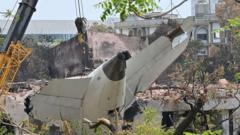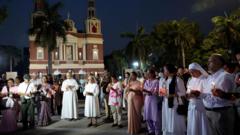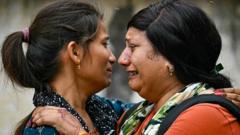Over the past three decades, more than 565 children have been killed or injured due to homemade bombs in West Bengal, often mistaken for toys. This article delves into the tragic stories of these young victims, the political backdrop driving the violence, and the societal indifference that allows such tragedies to continue.
The Harrowing Toll of Political Violence: Children as Casualties in West Bengal's Bombings

The Harrowing Toll of Political Violence: Children as Casualties in West Bengal's Bombings
An investigation reveals the unsettling link between crude bomb incidents and the ongoing political violence in West Bengal, where hundreds of children have suffered devastating consequences.
In the past three decades, at least 565 children in West Bengal, India, have fallen victim to homemade bombs linked to political violence, highlighting a grim reality that remains largely unaddressed. A BBC Eye investigation has uncovered shocking statistics, revealing that 94 children have lost their lives, while 471 have suffered injuries due to these explosive devices often mistaken for play objects.
The story of Puchu Sardar serves as a chilling example. At just nine years old, Puchu was one of several boys playing cricket when they stumbled upon what they believed were cricket balls in a nearby garden. When he struck one with his bat, a horrific explosion ensued, resulting in the deaths of two boys and injuring Puchu along with four others. His recovery was marred by a lack of medical funds, leading him to remove shrapnel from his own wounds with kitchen tongs.
An extensive review of local newspapers from 1996 to 2024 reveals that children are largely targeted during outdoor play, with over 60% of such tragic incidents occurring in familiar environments like streets and schools. Political factions in West Bengal historically resort to bombings to intimidate rivals, especially during electoral periods.
The use of crude bombs, steeped in a violent political legacy, can be traced back to the early 20th century when they were used against colonial authorities. Local variants of these devices, often made from jute strings and shrapnel, continue to wreak havoc, primarily during contentious elections, where political parties employ them to assert dominance over territory and control voting.
Accounts from young survivors like Poulami Halder and Sabina Khatun illuminate the devastating aftermath of such violence. Poulami, now 13, suffered a grievous injury that led to the amputation of her left hand when she unwittingly picked up a bomb disguised as a ball. Similarly, Sabina lost her hand after innocently handling another explosive device. Both girls navigate a new reality of physical challenges, but they refuse to let the trauma define them, harboring dreams of becoming teachers.
Despite the generations of pain, political parties often deny culpability, dismissing accusations of involvement with crude bombings. Experts assert that a culture of political violence pervades West Bengal, yet accountability remains elusive as active bomb violence persists. The echoes of political rallies grow louder, continuing to overshadow the cries of innocent children ensnared in this web of violence.
As the plight of child victims unfolds, advocates urge for greater awareness and comprehensive action to protect future generations from falling prey to such tragedies. With their dreams in tatters, victims like Puchu, Poulami, and Sabina reflect the urgent need for societal change to ensure no child ever endures such terror again.





















